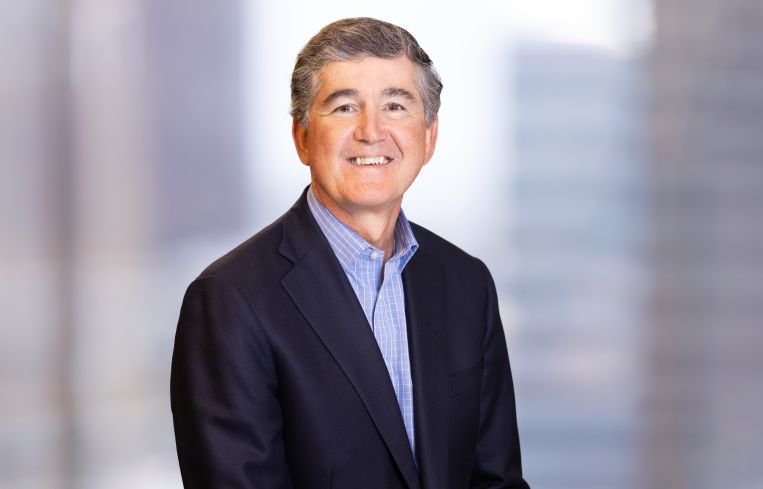Pearlmark’s Stephen Quazzo Is Eager to Invest After Raising $185M
The Chicago-based CEO and co-founder shares investment advice on how to take advantage of fluctuating interest rates
By Brian Pascus October 11, 2024 6:30 am
reprints
Stephen Quazzo is excited about the current capital markets landscape.
The CEO and co-founder of Pearlmark, a Chicago-based real estate investment firm, announced last month that his firm closed its sixth high-yield credit investment fund, Pearlmark Mezzanine Realty Partners VI, with more than $185 million in commitments.
Quazzo told CO that he expects to close $400 million in commitments by the start of 2025, with much of that money already lined up from investors eager to capitalize on a market that is expected to see more than $1 trillion worth of CRE loans come due and require refinancing over the next 18 months.
“I think we’ll be done by the end of the first quarter [2025], as the demand is significant,” he said. “We have another $130 million lined up to close at the end of September, and we have a deep pipeline of potential investors that are digging in and that we’ve had meetings with.”
Since its founding in 1996, Pearlmark has completed $5.6 billion in equity commitments and more than $2 billion in credit originations. Quazzo said the firm’s investment approach is primarily centered on both multifamily and multifamily-adjacent asset classes like build-to-rent housing, student housing and senior housing — assets that were flush with capital and heavily leveraged during the low interest rate period following COVID, but are now getting crushed by high interest rates and other unforeseen costs amid soaring inflation.
“People who were borrowing at a floating rate, and paid a high price three years ago, they now have to refinance their debt [at a much higher interest rate], and the only way to refinance debt is to inject a project with new equity or fill the gap with mezzanine debt,” he said. “And that’s really the opportunity that we’re seeing.”
He added that the operating environment for multifamily owners has become “much trickier than they expected” as rents that were expected to climb have instead flattened or even decreased in many markets, putting an unforeseen squeeze on the profit and loss assumptions of many borrowers.
“Insurance costs have tripled, property taxes have gone up, inflation has hit both labor and the expenses connected with owning a property, and you couple that with the doubling of interest rates, and these guys are in a world of hurt,” Quazzo explained. “That, in a nutshell, is the opportunity for fresh capital to come in and re-equitize these assets.”
Under Quazzo’s direction, Pearlmark operates two separate, closed-end fund vehicles — one focused on debt, targeting 10 to 11 percent returns, and one focused on equity, targeting 14 to 15 percent returns. The debt fund’s exposure typically doesn’t exceed 75 percent or fall below 55 percent, while the equity strategy focuses on value-add assets with common equity leveraged at 60 percent, according to Quazzo.
“We’re actively investing and actively fundraising for both of those strategies, and we’re obviously pretty excited about both the opportunity sets we’re seeing out there today,” he said.
Quazzo said that his firm takes a typically conservative approach to investing and implements risk-mitigation efforts when assessing a portfolio’s construction to reduce risk. This includes examining a borrower’s credentials, studying the quality of the real estate, and determining the strength of borrower guarantees and intercreditor agreements. Moreover, his firm invests through a fund that maintains capital reserves between 5 percent and 10 percent.
“Because we’re so far down in the capital stack, something really bad has to happen for us to incur a loss, and that’s how we underwrite,” he said. “It’s been almost 20 years since we incurred a full loss. Maybe you’ll lose some or take an asset back and hold it, but ultimately we are confident you’ll be able to get out with not only your capital but with some level of return.”
When asked how his firm’s lending operation weathered the storm of nearly a decade of low interest rates manipulated by the Fed’s quantitative easing policies, Quazzo pointed to a strategy of prioritizing middle-market borrowers with projects in Midwest cities like Minneapolis, Indianapolis or Madison, Wis., which might not appeal to the hotshots on Wall Street.
“We’re able to originate interesting opportunities for borrowers and owners who might not have access to all forms of capital,” he explained. Quazzo said the low interest rate environment prior to 2022 made the senior portion of the capital stack very cost efficient for borrowers, with tight spreads and low interest rates, forcing them to look at mezzanine financing as a better bet for incremental proceeds, and less costly, than preferred and common equity.
“In some ways, a low interest rate environment makes mezzanine more attractive for investors because they can’t stuff money into T bills,” he said. “ ‘T Bill and Chill’ works at a [Secured Overnight Financing Rate] of 5 percent, but three years ago they were getting 1 percent or 1.5 percent, so investing in mezzanine represents a huge return premium.”
Today, Quazzo’s firm usually targets equity investments between $10 million and $25 million -– though he’s gone as high as $40 million — with a strategy of holding for five years. On the credit side, the firm invests mezzanine debt no more than 20 percent of a total loan amount, or a maximum of $20 million on a $100 million deal.
“On the equity side, the strategy is: Buy it, fix it, sell it,” he said, before laughing and adding, “And on the credit side it’s: Get fully repaid with interest.”
Brian Pascus can be reached at bpascus@commercialobserver.com.



